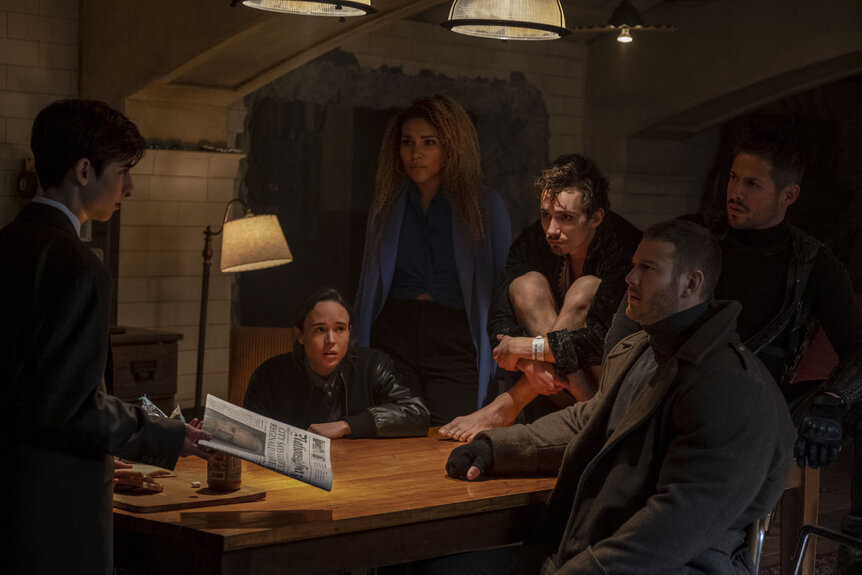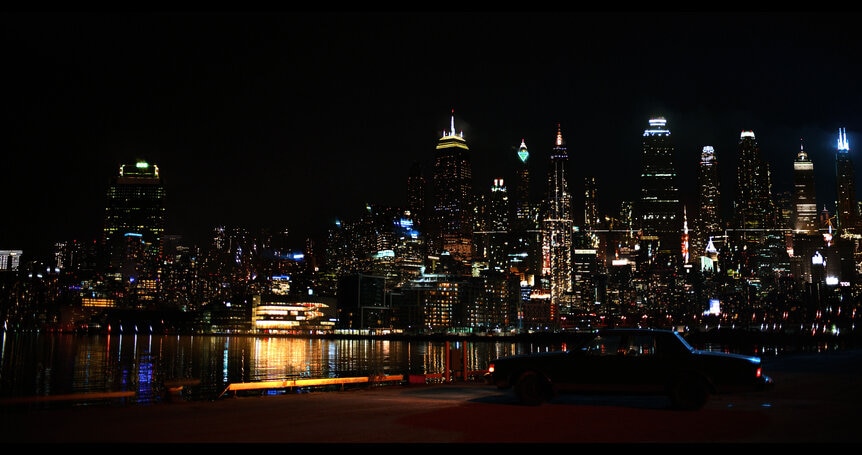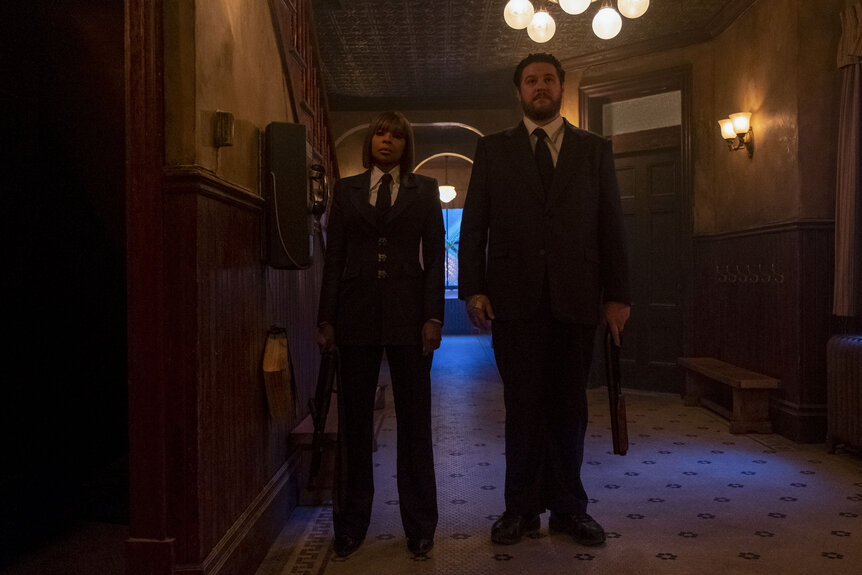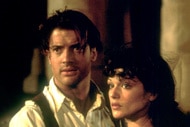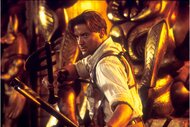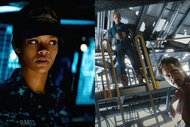Create a free profile to get unlimited access to exclusive videos, sweepstakes, and more!
Netflix's The Umbrella Academy showrunner explains what changes he made from the comics, and why
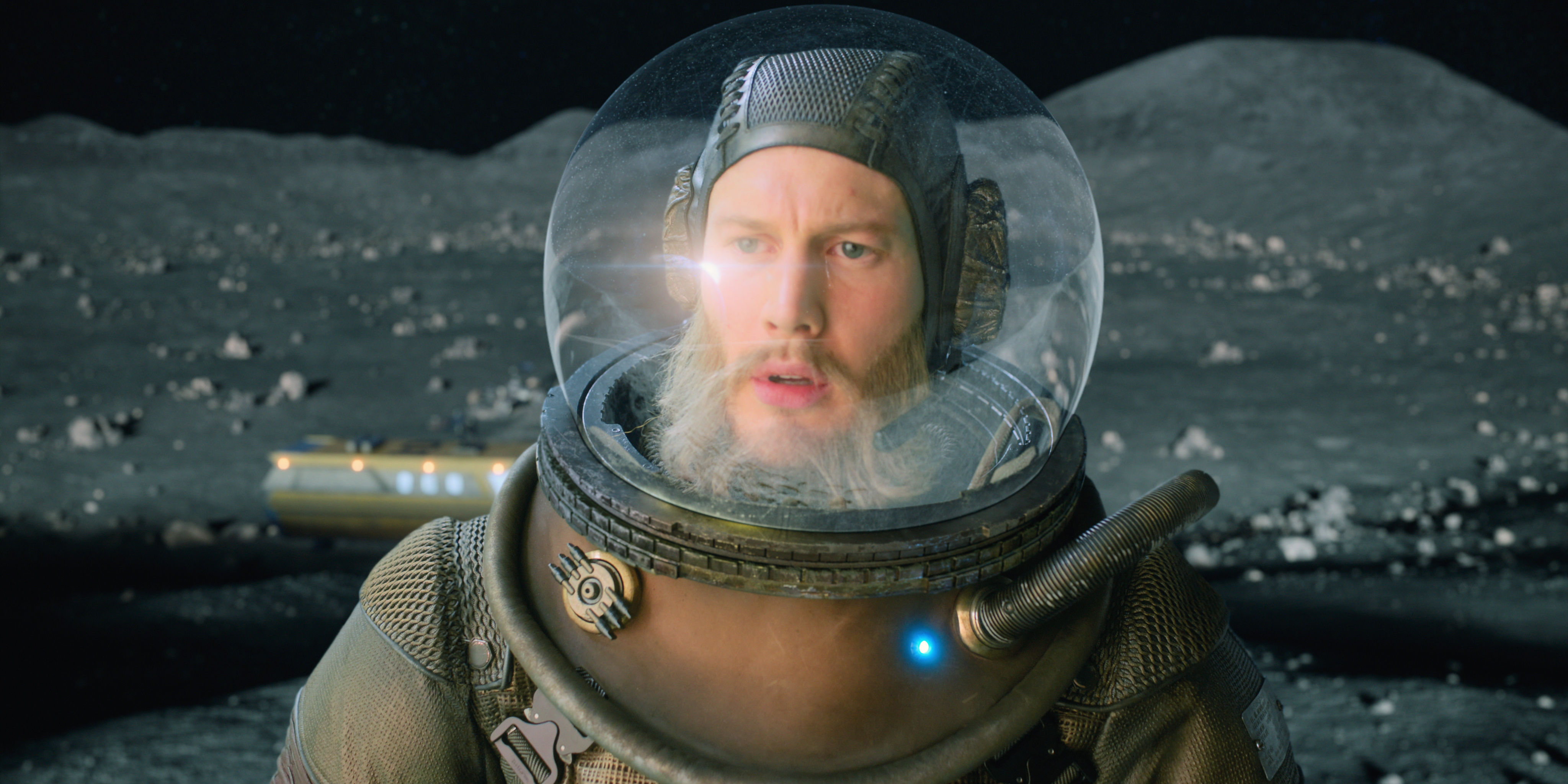
Fans of Gerard Way and Gabriel Bá's The Umbrella Academy series who dove into Netflix's new live-action adaptation over the weekend may have noticed the show looks a little different from the comics that won the duo an Eisner for Best Finite Series back in 2008.
When SYFY WIRE spoke to showrunner Steve Blackman (Altered Carbon) in advance of The Umbrella Academy's Toronto premiere, he ran down some of the key changes he made to the source material and the thought process behind them. Key in that adaptation was the graphic novels' long road to the screen. It had been in some stage of development since 2010, which helped free him to make the show his own.
"I think if we had done this early on, people would have wanted a page-for-page translation. I think now because there's a plethora of these shows, I got to do a different kind of superhero show," he explained. "There was a lot of pressure on Daredevil to look like Daredevil. This I got a lot of leeway from Netflix to do it the way I wanted."
It helped, of course, that Way was fully on board with that approach as well. Blackman made sure to keep both him and Bá involved throughout the process — including extending the pair an open invitation to set and soliciting their opinion on everything from costumes to the look of the show.
"I would always send him scripts and get his feedback," Blackman told SYFY WIRE, calling Way a gracious collaborator. "He sees the graphic novel as one thing and the TV show as another. So he's encouraged my own creative license on the show. And I've springboarded from his material and changed things that needed to change and added things."
That included trimming back some of the more stereotypically comic book-y moments, the ones we've seen ad nauseam in the past eight years' worth of superhero movies and TV shows. "The original pilot was written by a guy named Jeremy Slater, and I modified it," Blackman said. "He had that X-Men trope of the training sequence that you've seen so much. I pulled it out and put in they're getting tattoos and running in their matching, sort of right-out-of-Royal Tenenbaums, uniforms."
"They lived in a X-Men-type house and I put them right in the city," he added. "I really wanted to ground it in a different way."
"Then there were some more comic book trope things that I wanted to take out, like how Vanya transforms, how she's transformed from the beginning to the end of the season," Blackman said, teasing the character's evolution from the family's sole "ordinary" sibling to, well, you'll see…"In the comic book, it's a physical transformation. It's a machine," explains Blackman. "I had Ellen Page, so I wanted to do a psychological transformation."
Meanwhile, the season's arc combines story elements from each of the first two series of graphic novels, "Apocalypse Suite" and "Dallas." That necessitated adding the characters of Hazel and Cha-Cha — a pair of time-traveling assassins played by Cameron Britton and Mary J. Blige, respectively — who don't show up until the second series. Says Blackman: "I moved them forward because I just love their characters and I had an idea to do them like 'company men' who were upset about per diems and the company ripping them off."
It's all about broadening the show's potential appeal, he explains, saying, "I wanted a show that was very approachable to people who knew nothing about comics. You don't have to know anything about Umbrella Academy or a comic book to watch this show. And that was important for Netflix."
Still, that doesn't mean there aren't nods to comic fans. "There's a ton of Easter eggs," Blackman teased. "We have some Gabriel Bá portraits in the house that he actually painted. There's a comic book in Episode 3 you see early on that was painted by him. There are other ones that I can't give away, but the fans will just have to find."
If there's one change Blackman is most proud of though, it's making the show more diverse — which meant changing the race and/or gender of several key characters. Cha-Cha, for instance, is a white man in the comics, but in the show, that part's played by Blige. The Hargreeves kids were initially all white, as well; in the TV version, the family's far more diverse — something Way himself has called "one of the biggest improvements on the source material."
"I've talked to Gerard about this; I think he regrets it. I think it was just the time, where his head was at," Blackman confirmed, saying Way's thrilled the cast of characters has been made more diverse. "He wishes it always would've been."
"I think in some ways he's actually modifying where he's going with the comics based on him seeing the series," Blackman said. "It shows how open a person he is creatively." (Way recently told The New York Times that, as a result of the Netflix adaptation, "Diversity is something we're addressing in the Umbrella Academy comic.")
And if any fans have a problem with that, well, too bad, says the Umbrella Academy showrunner. "If there is backlash on it, I think the fans have to understand, we live in an inclusive world. I didn't hang a lantern on it. I just wanted to mirror the real world," he explains, saying it simply "wasn't an option" to have it any other way. "I was always going to cast to be diverse and inclusive. We're telling stories about LGBTQ. It's just a part of our world."
Now, thanks to Blackman and Netflix, it's a part of The Umbrella Academy's world too.
